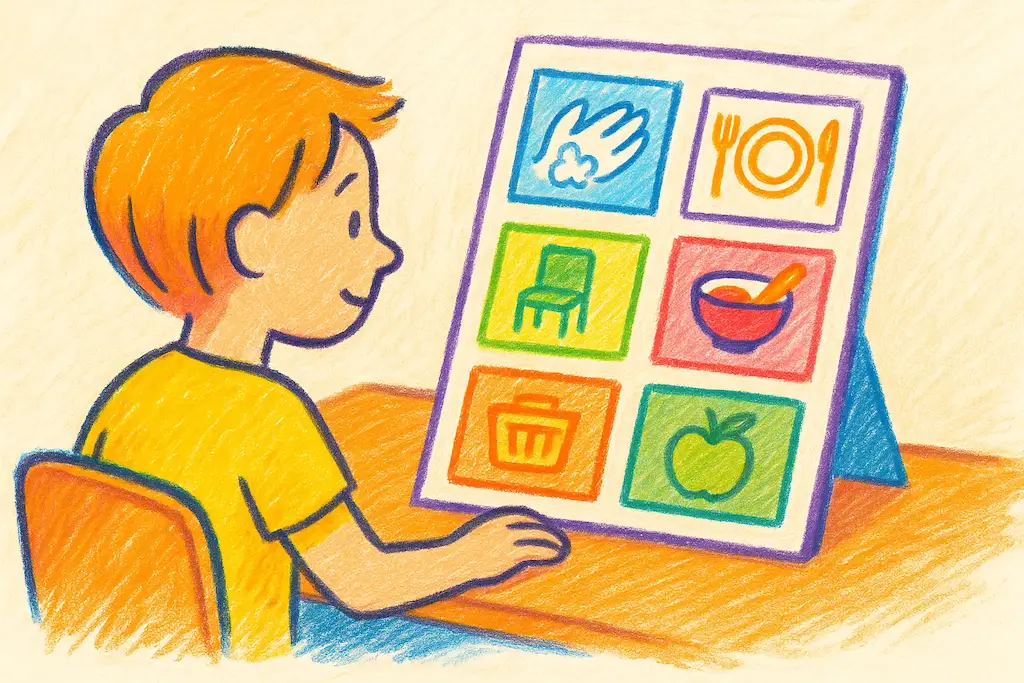Visual Schedules for Mealtime Routines: Calm Family Dining
Published {$created} by Carsten Blum
For many families, mealtimes are moments of stress. Children may refuse to sit at the table, argue over food, or leave before finishing.For children with autism or ADHD, meals can feel unpredictable, noisy, or overwhelming.
A visual schedule can transform these situations by making the process clear and predictable. Children know what will happen, in what order, and when the meal will end.
How Visual Schedules Support Mealtime
Clear expectations: Children see what’s expected at the table.
Less stress: Pictures reduce conflicts about when and how to eat.
Independence: Children follow the steps without repeated reminders.
Transitions: Helps children move from play to sitting calmly at the table.

Common Mealtime Routine Steps
A simple routine might look like this:
Wash hands
Set the table
Sit down at the table
Eat the meal
Clear the plate
Dessert or snack (optional)
Say “thank you” or family closing ritual
How to Create a Mealtime Schedule
Choose the steps that fit your family or classroom.
Use picture symbols for each step (plate, handwashing, chair, etc.).
Display the schedule near the dining area or on a whiteboard.
Involve the child in setting up and following the plan.
Reinforce positively when the child follows the steps.
Example of a Mealtime Routine Chart
Step | Symbol | Task |
|---|---|---|
1 | 🧼 | Wash hands |
2 | 🍽️ | Set the table |
3 | 🪑 | Sit down |
4 | 🍲 | Eat |
5 | 🧺 | Clear plate |
6 | 🍎 | Snack/dessert |
7 | 🤝 | End with thanks |
Tips for Success
Keep it short and clear – too many steps can overwhelm.
Use consistent rituals – e.g., always starting with handwashing.
Model the behavior – children follow better when adults do the same.
Celebrate small wins – praise when steps are completed calmly.
Benefits Beyond Mealtime
When children learn to follow a visual schedule at meals, the skills transfer to other areas of life.They gain independence, self-regulation, and confidence in handling structured situations.
Summary
Visual schedules make mealtimes calmer, clearer, and more enjoyable for both children and adults.By setting clear expectations with picture symbols, families and classrooms can turn meals into moments of connection instead of conflict.
Next step: Try creating a simple mealtime chart with picture symbols your child recognizes.